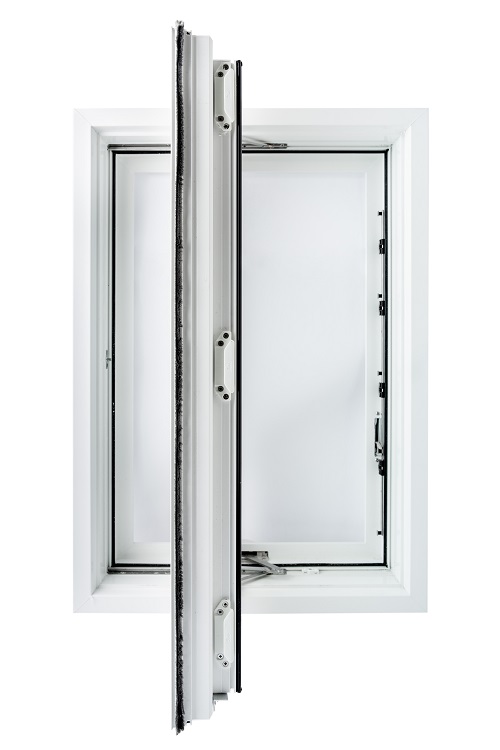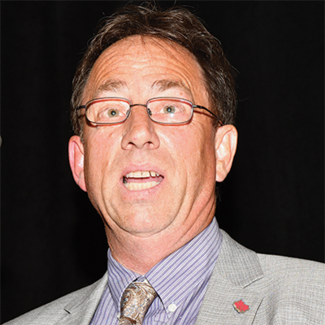Canadian Energy Codes: A Crooked Path to 2030 and Beyond
While some provinces push ahead faster on the requirements for improved energy efficiency for fenestration, energy efficiency is the future for Canadian fenestration products

(All images courtesy of Kohltech Windows & Entrance Systems.)
The Canadian construction industry has a long history of building codes that have developed over many decades, with the first National Building Code being published in 1941. There have been many versions of the NBC published since then, as well as codes for fire protection starting in 1963, and the first Model National Energy Code published in 1977.
While some provinces adopt the national codes as written, others adopt with minor amendments, and others publish their own code based on the NBC resulting in unique provincial building codes. Keeping track of what codes and versions apply where can be quite a challenge; don’t forget Canada even has a National Farm Building Code version 1995. Thus, it is strongly recommended to connect with a local authority to get clear, up-to-date information about the codes in effect in a particular region.

Provincial building codes
Looking down from 30,000 feet, provinces that publish their own version of Building Codes are British Columbia, Alberta, Ontario and Quebec. The rest adopt the NBC, with some, such as Manitoba, making minor amendments. Generally speaking, even those provinces publishing their own building codes base them on the NBC, making modifications deemed relevant to the specific characteristics of each province.
A unique code application in Canada is from the City of Vancouver, which is the only city in Canada that publishes its own building code bylaw, the VBBL, with specific requirements for construction and energy efficiency. The Authority Having Jurisdiction (AHJ) enforces building and energy codes at the local level. This can make for confusion and interpretation variations from jurisdiction to jurisdiction, checking with the local AHJ can save a lot of headaches. There are plans in the works to harmonize the application of building codes across the country.
A good place to start is to get copies of the NBC and the NECB. Canada has done a good job of making these available online, with the current NBC 2015 and NECB 2017.
Again, make sure to reference the current version for the jurisdiction you are working in. The 2020 version of the NBC was published this spring, with a commitment from all provinces to adopt or publish their version within 24 months. Therefore, during 2024, we should see new provincial codes based on the 2020 NBC.
Provinces that publish their own codes are also making them available online and can be found easily by Googling the province and building code. Resources can also be found at the bottom of this article.
- Alberta currently follows their version of the code under the NBC-2019 Alberta edition.
- British Columbia is currently under its BCBC 2018.
- The City of Vancouver publishes its own version of a building code in the Vancouver Building Bylaw, with very aggressive energy performance targets; current version is VBBL 2019.
- Quebec’s building code has been in force since Nov. 7, 2000. The new version of this chapter of the Construction Code, which went into effect on Jan. 8, 2022, consists of the National Building Code of Canada 2015, with amendments for Québec.
- Ontario publishes the Ontario Reg. 332/12, latest version, January 2022.
- Toronto is also taking steps to improve building performance through its Toronto Green Standard, including Greenhouse Gas Emissions limits and a 2030 net zero building target.
- All other provinces would adopt the National Building Code, with the current version being the NBC 2015.
Harmonization with U.S. requirements
There is some harmonization to U.S. requirements for fenestration performance when it comes to air, water leakage and structural performance: AAMA/WDMA/CSA 101/I.S.2/A440, commonly known as NAFS. NAFS is referenced in the NBC, as well as all published provincial codes. Check local jurisdictions for the NAFS version in effect for a specific region. Even though NAFS is harmonized between the U.S. and Canada, there are Canada-specific requirements referenced in A440S1, the Canadian Supplement to NAFS. One example of the differences is the requirement for air exfiltration leakage performance in Canada. NAFS-only compliance is not enough to comply in Canada. NAFS enforcement across Canada is inconsistent and local requirements may vary; check with the AHJ.
The Canadian requirements for energy efficiency of fenestration are not harmonized with the U.S. and are far more fragmented across Canada than NAFS requirements. Nationally, Canada publishes Section 9.36, Energy Efficiency of the NBC, covering Part 9 residential buildings, while the NECB 2015 covers larger buildings as per clause 1.3.3.2 in the NBC. Both the NECB and NBC 9.36 contain multiple paths for compliance. Prescriptive, performance and trade-off paths provide flexibility to builders in designing their projects for compliance. NBC 9.36 is used by provinces that do not have their own published energy codes and by some that adopt into their code, such as Alberta. Some provinces publish their own codes and integrate the NBC requirements with amendments.
Other strategies
The west has developed unique energy efficiency strategies and provides a variety of code, regulation and bylaw energy performance requirements. The BC Building Code contains section 9.36, which closely follows the NBC 9.36 requirements, as well as the BC Step Code, a voluntary tiered building performance methodology.
BC also has an energy efficiency law in the BC Energy Efficiency Standards Regulation that restricts the sale of products based on U-value performance. The City of Vancouver has its own bylaw that contains aggressive fenestration energy performance metrics, with recent updates requiring a 1.2 U value W/m2*k (.21IP) for most residential projects.
As the push to harmonize the codes across Canada crawls through its bureaucratic web, those faced with providing products across the country grapple with the requirements they must meet. There is no easy one-stop-shop for all the information, but for energy, there is information on Natural Resources Canada's website. See the list of resources at the end of this article o find the Natural Resources Canada search page with many of the provincial energy links.
The future

Fenestration Canada continues to look for ways to provide industry professionals with information to assist them through the maze of requirements the industry faces. We are often approached by members faced with competition from products imported into Canada that have not been tested to meet the requirements of Canadian building codes, often at price points well below what tested Canadian code-compliant products can be sold. A recent Fenestration Canada publication outlining the basic requirements for compliance to Canadian codes and standards was published. Although it was aimed at imported fenestration products, its requirements apply to all products, local or import, and has proven to be a valuable resource for manufacturers, builders, architects, specifiers and building officials.
While some provinces push ahead faster on the requirements for improved energy efficiency for fenestration, we can see that energy efficiency is the future for Canadian fenestration products. Programs like Net Zero, Passive House, City of Vancouver, BC Step Code, Energy Star and the Greener Homes rebate program are driving the demand for higher performance products today. Tiered energy codes that look at entire building performance will become the norm as we move toward 2030 and on to 2050 where the Net Zero home will be the standard.
If we could just get everyone on the same page, same targets, same methodology we could then make some effective progress nationally. As we push ahead developing these high-performance products, I can only hope we didn’t put the cart before the horse. There is a great deal of interest and increased discussion around embodied carbon. Will high-performance fenestration be an embodied carbon conflict? That is a topic for another day.
Resources
- Natural Resources Canada
- National Building Code of Canada 2015
- National Energy Code of Canada for Buildings 2017
- National Building Code of Canada 2020
- Vancouver Building Bylaw Part 10 Energy Efficiency
- Canadian Supplement to AAMA/WDMA/CSA 101/I.S.2/A440-11, NAFS-North American Fenestration Standard/Specification for windows, doors and skylights
- Canadian Code Compliance Advisory for Imported Windows, Doors and Skylights
- British Columbia Energy Step Code
- NBC-2019 Alberta edition
- British Columbia Building Code 2018
- Vancouver Building Bylaw, VBBL 2019
- Quebec Construction Code
- Ontario Re. 332/12 Building Code
- Toronto Green Standard



